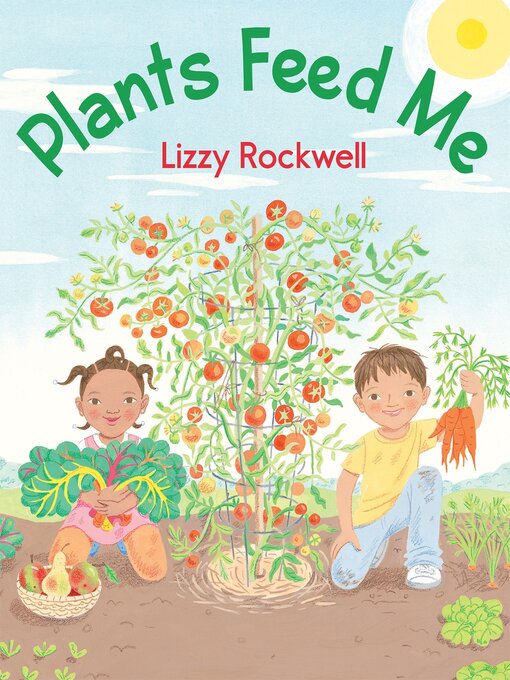Sink your teeth into the plants that feed the world—flowers, fruits, seeds, and all!
With its simple text and bright, appealing illustrations, this book is perfect for young readers learning about where their food comes from.
Clearly-labeled diagrams show the different parts of plants we use and eat—leaves of spinach and cabbage, the roots of carrot plants, and the wide variety of fruits, such as apples, berries, and tomatoes. Plants Feed Me explores the different types of seeds we eat— beans, nuts, rice, and even how wheat is ground into flour and used to make many other types of food.
Smiling children pick fruits and vegetables, and learn how plants grow from seeds, stretching toward the sky for sun and into the earth for nutrients. This celebration of fruits, vegetables, and more is sure to get kids interested in what's on their plates!
- National Poetry Month
- Mine a Good Book
- 250th Anniversary of the American Revolution
- Earth Day Reads
- 2025 Libby Book Award Winners and Runners Up
- How Does Your Garden Grow?
- Always Available Ebooks: Kids Classics
- Always Available Ebooks: Classic Fiction
- Always Available Ebooks: Classic Nonfiction
- Great reads without the wait!
- Adapted for Young Readers
- See all ebooks collections
- National Poetry Month
- Mine a Good Book
- 250th Anniversary of the American Revolution
- Earth Day Reads
- 2025 Libby Book Award Winners and Runners Up
- How Does Your Garden Grow?
- Always Available Audiobooks
- Great reads without the wait!
- Everyone Reads: Spanish Titles for Young Readers
- Adapted for Young Readers
- See all audiobooks collections





